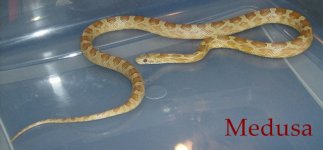carnivorouszoo
Crazy Critter Lady
I have recently had the impression made that if you have not bred a snake to a mate that is known and proven to be the suspected snakes morph that it is to be called a normal until bred.
How does any one sell hatchlings if this is the way to do things? How can anyone anywhere look at any hatchling and say it is a certain morph and sell it as anything other than a normal if it has not been bred and proven out?
I'm not trying to breed a jerk, and its not just on here that I am hearing this, its in other places too. Can someone help me understand? I don't want to breed something identify the hatchlings visually and have angry people because it wasn't what was thought. I'm still only expecting normals with hets this year as part of my little projects, but when I start seeing other morphs how will I know what they are for sure without holding all to breeding age/size and breeding them to each other or their parents?
How does any one sell hatchlings if this is the way to do things? How can anyone anywhere look at any hatchling and say it is a certain morph and sell it as anything other than a normal if it has not been bred and proven out?
I'm not trying to breed a jerk, and its not just on here that I am hearing this, its in other places too. Can someone help me understand? I don't want to breed something identify the hatchlings visually and have angry people because it wasn't what was thought. I'm still only expecting normals with hets this year as part of my little projects, but when I start seeing other morphs how will I know what they are for sure without holding all to breeding age/size and breeding them to each other or their parents?






